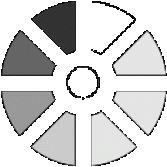Guide to Education System in Switzerland
The Switzerland educational system is equally varied and stimulating as the Swiss landscape. Switzerland has a decentralized education system. It is built on a complex interplay between the Confederation, the cantons and the communes. The primary responsibility for education lies with the cantons (states). The Swiss Constitution guarantees autonomy to the country's 26 cantons in the field of education- primary and secondary levels while the Federal Government and cantons share responsibilities of higher education. The Confederation is in charge of both advanced vocational training and the universities of applied sciences.
Educational Background: History
Switzerland is located in the nub of the Europe and has a long tradition of freedom. In the mid-15th century, schools were primarily designed to meet the needs of vocational training. During this time, the University of Basel, Switzerland’s oldest University, was established in 1460 with a grant of Pope Pius II. In the 19th and 20th century, several Swiss names were prominent in the area of education. With the onslaught of liberalization in the 19th century, more focus was put on education, and in 1850, compulsory school attendance was introduced in cantons. Education remained the responsibility of the cantons.
Switzerland Education System Scenario
According to Federal Statistics Office new scenarios for the education system, the proportion of tertiary education graduates (higher education institutions and higher vocational education) in the population aged 25 to 64 is set to rise from 37% in 2012 to 45% in 2022. The number of graduates of Swiss higher education institutions in the population should increase by 370,000.
The employment rate in Switzerland for people with all levels of education is 83%, placing it first together with Iceland, Norway and Sweden among OECD countries.
Compulsory Education
The Primary and Secondary School level I are compulsory, and last for nine years. The majority of children attend state-run schools. State schools play a vital role in integration i.e., children who have different social, linguistic and cultural backgrounds all go to the same school. The age at which children start primary school varies by canton; the youngest is 6. The duration of the schools varies: in most cantons it is 6 years, but in others it is 5 or 4. Responsibility for compulsory schooling lies with the cantons and their communes.
Post-Compulsory Education
At the age of 16, students who wish to continue their education move into Secondary II, which generally lasts 3-4 years. Secondary level II prepares students for tertiary education and even provides vocational training to the students so that they can enter a career in the job marketplace. The post-compulsory education- upper secondary level and tertiary sector responsibility lies both with the cantons and with the Confederation.
Vocational education and training, tertiary level professional education and training and job-related continuing education and training is managed by the Confederation, and the cantons are responsible for enforcement.
Switzerland Education System: Structure at a Glance
The Switzerland education system consists of the following educational levels:
- Pre-School: This includes kindergarten and is financed largely by the commune. Starts at the age of four or five and lasts for one or two years.
- Primary School Level: The age of primary school varies by cantons; the youngest is six. It lasts for six years.
- Lower-Secondary Education: It lasts three years and covers grades 9-11.
- Upper-Secondary Education: It includes vocational education and training (VET) and general education schools.
- Tertiary Level Education: It includes tertiary level B professional education and training (PET)- Federal PET Diploma Examinations, Advanced Federal PET Diploma Examinations and PET colleges and tertiary level A institutions- universities, universities of applied sciences and universities of teacher education.
- Continuing Education and Training (CET): CET is largely market-based organised. Private bodies often provide CET courses and programs. The Confederation and the cantons have a subsidiary role in CET.
Tertiary Level Education: Snapshot
At the tertiary level of education, the Switzerland education system offers a wide range of programs which can be completed at tertiary level A institutions or at the tertiary level B professional education and training institutions.
The tertiary level A institutions offer various academic or practice-oriented degree programs. For entry to a tertiary A institution, in general, a Baccalaureate or a Federal Vocational Baccalaureate is required, depending on the institution. Switzerland has the following tertiary level A institutions:
- Universities- Cantonal universities and Federal Institutes of Technology (ETH)
- Universities of applied sciences
- Universities of teacher education
Tertiary level B professional education and training enables professionals who have completed vocational education and training (VET) to specialise and enhance their skills and knowledge. It offers the following educational programs:
- Federal PET Diploma Examinations and Advanced Federal PET Diploma Examinations
- PET colleges
Language of Instruction
The language of instruction is German, French, Italian or Romansh, depending on the language region. During their compulsory schooling in most cantons students learn at least two other languages.
 Processing...
Processing...
 Processing...
Processing...